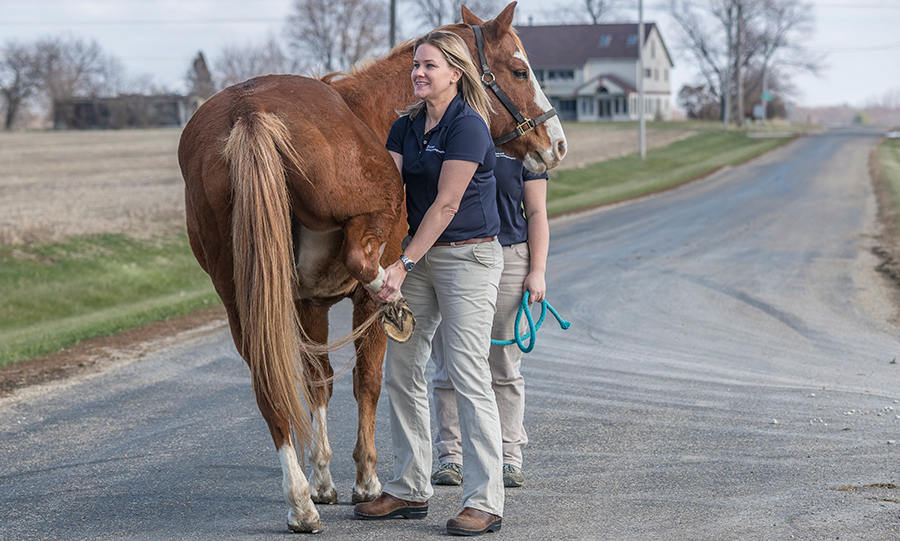What does an elderly pasture pony have in common with a trail horse with a soft tissue injury and a Thoroughbred racehorse? They all can benefit from rehabilitation!
Dr. Lori Madsen is an equine veterinarian at the University of Illinois Veterinary Teaching Hospital who is pursuing a specialty in sports medicine and rehabilitation. “Physical rehabilitation for animals is not just for athletes,” she says. “This discipline aims to help horses maintain a good quality of life by maintaining, improving, or restoring physical function.”
Rehabilitation aims to strengthen an injured area or minimize deficits in function as an animal ages, supporting the animal to regain proper alignment and movement.
A Multimodal Approach
Like physical therapy in people, rehabilitation for equine companions uses a multimodal approach. This means combining multiple techniques to achieve the best results.
“Strengthening exercises, stretches, and other techniques such as hot or cold therapy, chiropractics, and acupuncture work together to help restore function,” Dr. Madsen says.
The specific needs of the patient determine the treatment plan. “In an acute injury one of the goals is to minimize inflammation,” says Dr. Madsen. Strategies often include rest, ice, compression, and NSAIDs (nonsteroidal anti-inflammatory drugs). Heat would not be used because it is already present in inflamed tissues, and our goal is to resolve the inflammation so the affected area can progress to healing.
“After the initial inflammation subsides, we can start asking the patient to do more, such as passive range of motion exercises, stretching, and simple strengthening exercises,” she says. “As the healing process continues, we can incorporate proprioception retraining and increase the intensity of the strengthening exercises.”
When rehabilitating a horse, the veterinarian wants to physically challenge the horse without causing overexertion, which could result in a reinjury.
Where East Meets West
Chiropractics and acupuncture are often utilized in physical rehabilitation as part of a multimodal approach. Dr. Madsen, who is certified in animal chiropractics, explains that when thinking about animal chiropractics and acupuncture, it is important to remember that those treatments are part of eastern medicine, while traditional veterinary care is considered western medicine. One of the fundamental differences between the two is that, in western medicine, you go to the doctor when you are sick, whereas in eastern medicine, you go to the doctor to remain well. Therefore, chiropractics and acupuncture seek to help maintain wellness and minimize injury or illness. However, they do not replace traditional veterinary medicine.
Key Takeaways
Veterinary physical rehabilitation offers benefits for any animal, regardless of the animal’s fitness level or age. It focuses on a return to function after an injury by addressing the entire animal, as well as helping animals maintain and or improve movement as they get older.
By Alaina Lamp




